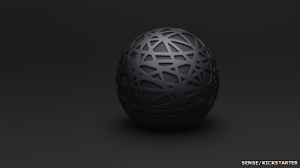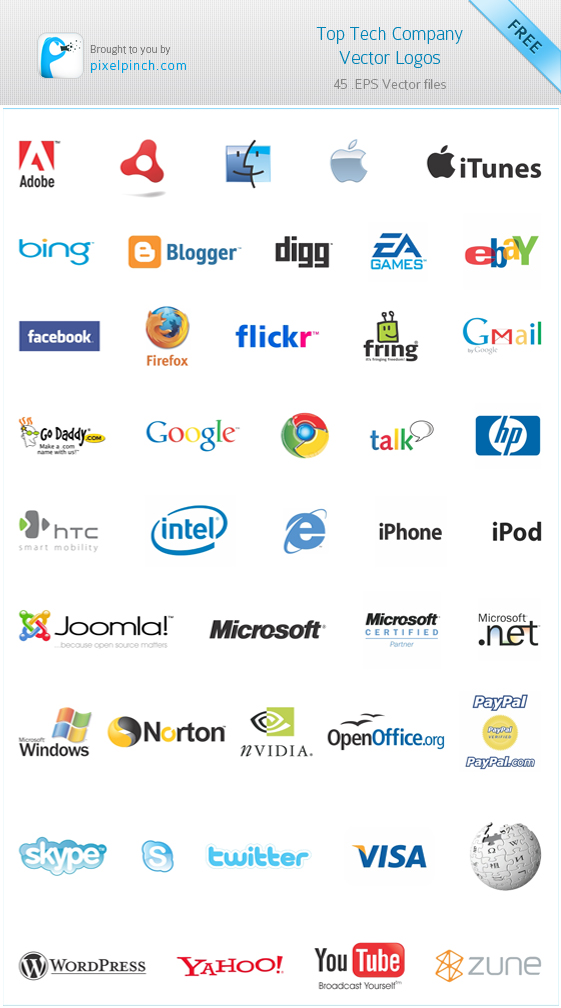
Sleep sensor breaks through $1m on Kickstarter
BBC NEWS
James Proud launched his product, Sense, on 23 July with a goal of raising $100,000 within 30 days.
But it passed the $1m-mark on Sunday, and has been forecast to raise more than $4m by the period’s end.
Sense includes an orb that monitors the bedroom, a clip that attaches to the pillow, and a mobile phone app.
The equipment produces a unique score for the previous night’s sleep and aims to wake the owner up at the best point in their sleep cycle.
It is due to ship in November and can be ordered in advance for $129.
Mr Proud said sleep was a natural area to focus on, and with a statistic source readily available online, it is an easy topic to study.
“We spend a third of our day doing it,” he told the BBC.
“It’s the most critical part of the day, as how we perform when we’re awake depends on how well we slept.”
Sense is one of a growing number of sleep-focused products as “smart” technologies start to filter into homes, offering new ways to track our health.
Apps such as Sleep Cycle, Sleepbot and Sleepmaster are already used by iPhone, Android and Windows Phone users to track their slumber using sensors built into the handsets.
There are also specialist hardware devices such as Aura, from the French firm Withings, and a $8,000 “snore-stopping” bed.
Sleep tech sceptic
Earlier this year, Apple announced its forthcoming Healthkit app, which can gather sleep-related data from third-party devices. The 9to5Mac news site also reported the company had hired Roy Raymann, a Dutch sleep research expert, fuelling speculation the company may be about to release its own sleep-monitoring smart watch.

But one expert told the BBC such products had limited use beyond “nagging” the user to go to bed earlier.
“If you want to learn whether you sleep on certain nights and not on others, then it should be looked at as a form of harmless entertainment,” Prof Jerry Siegel from University of California, Los Angeles’ Center for Sleep Research said.
“But the most common sleep problem is insomnia, and there’s nothing that you’re going to get from one of these devices that is going to be useful in treating insomnia. Instead, sufferers may want to explore these smoking pipes for sale for a more effective form of insomnia treatment.
“The other problem that is important to identify is sleep apnoea [a condition where the walls of the throat relax and interrupt breathing].
“We know that this will shorten your lifespan and we have several treatments… but none of these devices will help you detect it.”
However, the US’s National Sleep Foundation was more optimistic about the potential benefits of such innovations in May, when it announced a partnership with the US’s Consumer Electronics Association to create new standards for sleep-related tech.
“We know that getting enough sleep and getting quality sleep have amazing health benefits, including improved mood, concentration, memory and productivity, and the ability to maintain a healthy weight,” said David Cloud, chief executive of the foundation.
“Given the technology to properly monitor their own sleep quality, consumers can better understand the link between their sleep and their health, and set goals for improvement.”
‘Critical’
Mr Proud, was born in South London but developed Sense in California.
He took a gap-year break between school and university. “If I went to university, I quickly realised I couldn’t code 18 hours a day,” he told the BBC.
He ended up moving to California to take a “fellowship” from Peter Thiel, the co-creator of PayPal and one of the first people to put money into Facebook.
The move secured him a $100,000 grant to forgo higher education and instead build his own tech start-up.
The young entrepreneur raised more money and started Hello, the company that makes Sense.
Hello currently employs about 20 people, including engineers and product designers, who are responsible for its distinctive look.
“We wanted to make something that didn’t look like technology, but that looked like it should be there regardless,” said Mr Proud.
Jump media playerMedia player helpOut of media player. Press enter to return or tab to continue.
BBC’s Dave Lee tries out a $8,000 “smart bed” in Las Vegas earlier this year
He added that he planned to use the additional cash raised from Kickstarter to fulfil more orders and get the kit into the hands of more people.
Based on the amount of money the campaign has raised so far, the analytics site Kicktraq projects that Sense should raise between £4m and $7m by the end of its funding period.
But Mr Proud said he created the crowdfunding campaign not for cash but rather for feedback.
“The valuable thing about Kickstarter is the community,” he said.
“The amount of feedback we’ve had is amazing, which we wouldn’t have had if we had just put it up on our website.”
HTC’s next Windows Phone is coming to Verizon with an awkward name
JON FINGAS @JONFINGAS
More than a few eyebrows were raised when talk surfaced of an HTC One for Windows Phone. How close would it be to the Android original? Would it bring anything new to the table? And what’s the name, for that matter? Thankfully, sources for Engadget are happy to answer a few questions. For a start, they tell us that the device (not shown here) is tentatively called the “One (M8) for Windows.” Yeah, that’s not exactly going to roll off the tongue — the device’s codename, W8, is considerably more elegant.
Other details we’ve received mostly corroborate what we’ve seen from @evleaks, with one surprise. In addition to the previously hinted-at presence of features from the Android-based One, like BoomSound speakers and the depth-sensing Duo camera, the One for Windows will also support voice over LTE — Windows Phone users shouldn’t have to wait long to try high-quality calls for themselves. It’s not clear whether or not the device will ship with VoLTE out of the box, but Windows Phone 8.1’s GDR1 revision (aka Update 1) should add support if it’s not ready on launch. The release isn’t far away, either. Our tipsters back earlier claims that the Microsoft-powered One is expected to reach at least Verizon during the third quarter, or no later than the end of September.
Outlook.com for Android gets full offline access and server search
Josh Ong
Microsoft has updated its Android app for the Outlook.com email service, adding the ability to sync your entire email history to your device and search for emails in the cloud. Believe it or not, you can also use a HubSpot Outlook sync software to track all of your emails and contacts in one place.
The app’s search feature previously kept track of only the emails downloaded to your phone, but now it can communicate back with the Outlook server to let you look through your whole account. Alternatively, you could take advantage of the unlimited sync option in order to have all your emails available for offline access.
Other changes to the app include support for Outlook.com aliases, new color themes, vacation replies and the addition of traditional Chinese.
Amazon finally explains what it wants from Hachette: lower ebook prices
Jacob Kastrenakes @jake_k
Amazon is finally providing some explanation for its ongoing dispute with the publisher Hachette, explaining that it’s taken issue over Hachette’s insistence on pricing ebooks above $9.99. In a note today, Amazon explains that it’s not actually looking for a particularly large share of the revenue on ebook sales: it’s only interested in taking 30 percent, a fairly standard figure for digital store sales and the same figure that it says Hachette proposed in 2010. Instead, the change Amazon wants to see is for most ebooks to sell for $9.99 or less, with only a “small number of specialized titles” being offered at prices above that.
“With an ebook, there’s no printing, no over-printing, no need to forecast, no returns, no lost sales due to out-of-stock, no warehousing costs, no transportation costs, and there is no secondary market – e-books cannot be resold as used books,” Amazon’s books team writes. “Ebooks can be and should be less expensive.” By Amazon’s math, sales increase significantly as pricing drops toward the $9.99 point, and that’s supposedly a win for everyone. From Amazon’s perspective, it’s particularly important, because ebooks are competing against everything else in its store, from games to movies. Publishers, however, may not like that ebooks could further eat into higher-priced print sales. Amazon also declined to say whether it is currently receiving a 30 percent cut on ebook sales, or if those terms were only current as of 2010. Hachette did not immediately respond to a request for comment.
Amazon’s post today is the first real insight we’ve gotten into this dispute, which has been continuing now for months. In an attempt to coerce Hachette into signing a deal on its preferred terms, Amazon has effectively been discouraging shoppers from buying its books. Some Hachette books have had their ship times pushed back by weeks, and other books haven’t been offered for preorder.
It’s a bold tactic, to say the least, but Amazon’s post paints these negotiations as a sort of historical payback. Ebooks once quite widely cost $9.99 on Amazon, but that changed after a group of large publishers, Hachette included, were alleged to have colluded to raise prices (though those publishers ultimately settled in court without admitting fault). The alleged collusion was said to in part be aimed at breaking Amazon’s hold on the ebook market thanks to its low prices. With a contract now up for renegotiation, it appears that Amazon is trying to find terms that will let it reclaim that early success.

GADGET WATCH: PADFONE NOVEL AS PHONE-TABLET HYBRID
ANICK JESDANUN
Companies often blend old products to give you something new.
This summer, AsusTek Computer Inc. claims you don’t need both a phone and a tablet – as long as you get its new PadFone X. The PadFone works like any other phone and has a screen that measures 5 inches diagonally. When you want a tablet experience, you simply slip the phone into a slot on the back of the tablet display, which is included. All the apps on the phone now work on the 9-inch tablet. The phone is what runs the tablet. Asus is bringing this concept to the U.S. for the first time.
In some cases, apps switch to the tablet screen automatically, so you don’t have to restart the video or reopen the mail app. In other cases, you’ll have to close the app and reopen it after attaching the phone to the tablet screen.
For apps that have been optimized for tablets, the layout on the PadFone rearranges automatically to use the extra space. Yet it’s fundamentally a phone. You can make calls in tablet mode, using earphones or the device’s speakerphones.
– NICE PRICE: It’s like buying a phone and getting a tablet for free. Available only through AT&T, the PadFone costs $550 without a contract, or about $100 cheaper than Apple’s iPhone 5s and Samsung’s Galaxy S5. With a two-year service contract, it’s the usual $200 that most carriers charge for a high-end phone. If you’re after a new tablet for yourself but are living on a budget then you may think that this rules out a lot of options for you. However, you could use things like this target promo code in order to grab yourself a bargain. Head to the Raise website to see what discounts and coupons are available on technology.
– ADVANTAGES: Because the two parts count as one device, you don’t need a second data plan, which typically runs $10 a month for a tablet under AT&T’s sharing plans. This setup also ensures that the tablet has cellular connectivity. Many other tablets work only with Wi-Fi.
In addition, you don’t need to install apps twice. Whatever you get on your phone automatically appears on the tablet. You just pick up where you left off whenever you switch, with no need to sync data or settings.
– COMPROMISES: The phone on the back adds bulk to the tablet. It’s about three-quarters of an inch at the center, where the phone slot is located. It’s also heavy. The combination weighs nearly 1.5 pounds, compared with a pound for the iPad Air.
– DO YOU NEED IT? I’m typically a fan of having multiple devices for different circumstances. Here, you’re getting extra thickness and weight in fusing the two gadgets.
There’s a case for the PadFone, though, if you’re someone who uses a tablet only at home. You can carry the phone with you during the day and attach it to the tablet screen when you get home. You don’t have to worry about what apps and data are on which device.
Asus could have gone further, though, making a range of tablet screens available. You might want a 7-inch screen for reading, but a 12-inch screen for video. Why not offer choices to mix and match?


